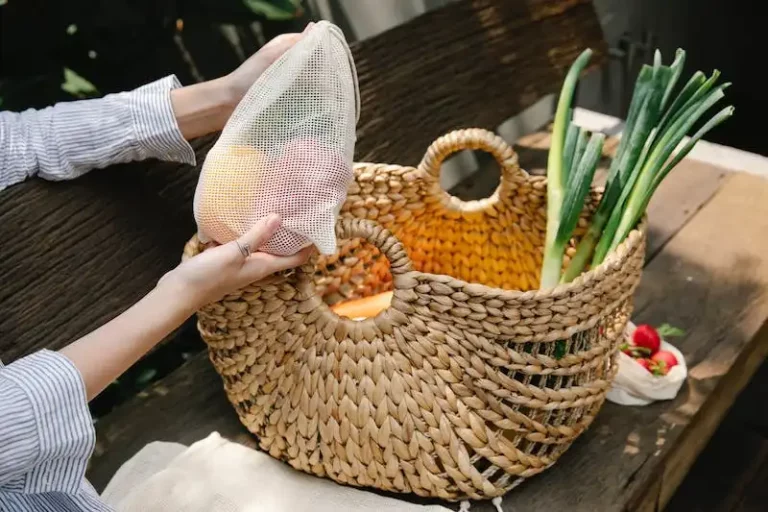Welcome to our complete guide on Calathea Ornata, also known as the Pinstripe Plant. If you’re a plant enthusiast or a new plant parent, this stunning houseplant will surely catch your attention. With its gorgeous pink stripes on deep green leaves, the Calathea Ornata is a must-have for any plant collection.
The Calathea Ornata is not only a beautiful addition to your indoor garden, but it also holds an important duty – it helps to purify the air in your home. As a member of the prayer plant family, its leaves have the ability to move throughout the day, turning towards the light and curling up at night.
When it comes to caring for your Calathea Ornata, it’s important to provide the right conditions. This houseplant prefers bright, indirect light, so placing it near a window is ideal. However, be cautious of direct sunlight, as it can cause the plant’s vibrant colors to fade or even burn the leaves. It also requires well-draining soil to prevent waterlogged roots, so make sure to use a potting mix that promotes good drainage.
Watering is a crucial aspect of caring for your Calathea Ornata. It thrives in high humidity levels, so misting the leaves regularly or placing it on a pebble tray filled with water can help increase humidity around the plant. However, be careful not to overwater it, as it is susceptible to root rot. Check the moisture levels of the soil and water only when the top inch starts to dry out. It’s better to underwater than to overwater this plant.
As for fertilizing, Calathea Ornata doesn’t need much. A monthly application of a balanced, liquid houseplant fertilizer during the growing season should be sufficient to promote healthy growth. Avoid fertilizing during the winter months, as the plant goes into a period of dormancy and doesn’t require as much nutrients.
Pruning is another aspect to consider when it comes to the care of your Calathea Ornata. Regular pruning will help to keep the plant looking neat and compact. Remove any yellow or brown leaves as soon as you spot them, as they can be a sign of overwatering, underwatering, or inadequate lighting. Pruning also helps to prevent the plant from becoming too overcrowded, allowing for better air circulation and reducing the risk of diseases or problems.
If your Calathea Ornata is outgrowing its pot, it’s time to repot it. The best time to repot is in the spring or early summer when the plant is actively growing. Choose a pot that is only slightly larger than the current one to prevent excessive soil moisture. Gently untangle any root bound roots and place it in fresh potting mix.
In conclusion, the Calathea Ornata is a stunning houseplant that will add a touch of elegance to any space. Its unique pinstripes, vibrant colors, and ability to purify the air make it a welcome addition to any plant collection. With proper care and attention to its lighting, watering, and humidity needs, your Calathea Ornata will thrive and bring joy for years to come.
If you’re a new gardener with questions about how to care for your Calathea Ornata or if you’re experiencing any problems with your plant, don’t hesitate to reach out to a local plant nursery or join online plant communities. Remember, a little love and care goes a long way in keeping your Calathea Ornata healthy and happy.
How to Grow and Care for Calathea Ornata
Calathea ornata, also known as the Pinstripe Plant, is a popular houseplant that is cherished for its stunning foliage. If you want to add this beautiful plant to your collection, here are some tips on how to grow and care for Calathea Ornata.
- Lighting: Calathea Ornata prefers bright, indirect light. Avoid placing it in direct sunlight as it can scorch the leaves.
- Watering: Calathea Ornata requires regular watering to thrive. Keep the soil evenly moist but not soggy. Water the plant when the top inch of soil feels dry to the touch.
- Humidity: Calathea Ornata thrives in high humidity environments. If the air in your home is dry, consider using a humidifier or placing the plant on a tray filled with pebbles and water to increase humidity around it.
- Temperature: Calathea Ornata prefers temperatures between 65-85°F (18-29°C) and can be sensitive to cold drafts. Avoid placing it near doors or windows that might cause temperature fluctuations.
- Soil: Use well-draining potting soil that retains moisture but does not become waterlogged. A mixture of peat moss, perlite, and vermiculite is recommended.
- Fertilizing: Feed Calathea Ornata with a balanced houseplant fertilizer every two to four weeks during the growing season (spring and summer) and reduce feeding frequency during the winter months.
- Pruning: Remove any yellow or damaged leaves to maintain the plant’s overall health and appearance.
- Propagation: Calathea Ornata can be propagated through division. Simply separate the plant into smaller clumps, ensuring each division has roots, and pot them separately.
- Pests: Calathea Ornata is susceptible to pests such as spider mites and aphids. Regularly check the plant for any signs of infestation, and if necessary, treat with appropriate organic insecticides.
- Additional Tips: Calathea Ornata benefits from an occasional misting to increase humidity. Avoid placing it near cold or hot drafts, as extreme temperatures can damage the leaves. Calathea Ornata can be used in terrariums, but be mindful of its size and growth habit.
By following these care tips, you can ensure that your Calathea Ornata remains healthy and beautiful. Enjoy the striking pinstripes and vibrant foliage this houseplant has to offer!
Calathea Ornata Care
Calathea ornata, also known as the pinstripe plant, is a popular choice for indoor plant enthusiasts. Its unique striped patterns and beautiful foliage make it a statement piece in any room. If you’re considering adding a Calathea ornata to your plant collection, here’s everything you need to know about its care:
Light:
Calathea ornata prefers bright, indirect light. Avoid placing it in direct sunlight, as it can scorch the leaves. A north-facing window or a few feet away from an east or west-facing window is ideal. Always keep an eye on how much light your plant is receiving and adjust its placement accordingly.
Watering:
Calathea ornata likes to be kept consistently moist but not overly soggy. Water your plant when the top inch of soil feels dry to the touch. Use filtered or distilled water to avoid the build-up of minerals in the soil, which can damage the plant.
Humidity:
Calathea ornata thrives in high humidity environments. If your home is on the drier side, consider placing a humidifier near the plant or using a pebble tray filled with water to increase humidity. Misting the leaves with water can also help to maintain humidity levels.
Temperature:
Calathea ornata does well in temperatures between 65-75°F (18-24°C). Avoid placing it near drafts or vents, as sudden temperature changes can cause stress and damage to the foliage.
Soil:
Plant your Calathea ornata in a well-draining potting mix. A mix of peat moss, perlite, and compost is ideal. Make sure the pot you choose has drainage holes to prevent waterlogging, which can lead to root rot.
Fertilizer:
Feed your Calathea ornata with a balanced, water-soluble fertilizer diluted to half strength every 2-4 weeks during the growing season (spring and summer). Avoid fertilizing during the winter months when growth slows down.
Common Problems:
One common issue with Calathea ornata is the curling or yellowing of the leaves. This can be caused by underwatering, overwatering, low humidity, or temperature fluctuations. Make sure to adjust watering and humidity levels to address these issues.
Another problem is brown, crispy leaf edges, which can be a sign of low humidity or exposure to cold drafts. Increase humidity levels and keep the plant away from direct airflow to prevent further damage.
Tips and Tricks:
- Keep your Calathea ornata out of direct sunlight to avoid leaf burn.
- Rotate your plant every few weeks to ensure even growth and prevent it from leaning towards the light source.
- Remove any yellow or brown leaves to maintain the plant’s appearance and overall health.
- Prune your Calathea ornata annually to encourage new growth and maintain its desired shape.
With proper care and attention, your Calathea ornata will thrive and become a beautiful addition to your indoor plant collection. Don’t hesitate to ask questions or seek additional information from a local grower or plant guide to keep your plant looking its best!
Light
Proper lighting is essential for the Calathea ornata, also known as the Pinstripe plant, to thrive. This stunning houseplant needs bright, indirect light to show off its signature pinstripes. Allowing it to receive direct sunlight can quickly damage its delicate leaves, so it’s crucial to place it where it can enjoy filtered light.
When it comes to lighting, finding the right balance is key. Too much light can cause the pinstripes to fade or turn yellow, while too little light can result in a leggy and less attractive plant growth. A spot near a north-facing window or a few feet away from a south or west-facing window is often ideal. If you notice the colors of the leaves starting to fade or the plant becoming leggy, then it’s time to adjust its lighting.
In addition to lighting, Calathea ornata requires a high level of humidity to thrive. You can help increase humidity levels by placing a humidity tray under the pot or by using a humidifier. Misting the leaves with water can also provide a temporary boost in humidity.
When it comes to potting, the Pinstripe plant should be provided with a well-draining soil substrate to prevent root rot. Opt for a pot with drainage holes and consider using an extra layer of plastic at the bottom to prevent water from accumulating. Calatheas are sensitive to overwatering, so you should only water the plant when the top inch of soil feels dry to the touch.
Repotting should be done every one to two years, but it’s best to avoid repotting during the winter months when the plant is more dormant. When repotting, choose a pot that is one size larger and use a well-draining potting mix. Repotting not only refreshes the soil, but it also provides the plant with extra space for its roots to grow.
In terms of fertilizer, Calathea ornata is not a heavy feeder. A balanced houseplant fertilizer can be applied every two to four weeks during the spring and summer months. Make sure to dilute the fertilizer to half strength to prevent any potential fertilizer burn. Fertilizing can be reduced or stopped altogether during the winter months when the plant’s growth slows down.
When propagating the Pinstripe plant, division is the most common method. A mature and healthy Calathea ornata can be carefully removed from its pot and divided into smaller sections, making sure that each section has a good amount of roots. These sections can then be potted separately to create new plants.
When it comes to pests and diseases, Calathea ornata is generally an easy-to-care-for plant, but it is susceptible to common houseplant pests such as spider mites, mealybugs, and aphids. Regularly inspect the plant for any signs of pests, and if necessary, treat with appropriate methods or products. Providing good air circulation, avoiding overwatering, and keeping the plant clean can help prevent pest problems.
In conclusion, the Calathea ornata, or Pinstripe plant, is a beautiful houseplant that requires bright, indirect light to thrive. Proper lighting, humidity, and watering are key to keeping this plant healthy and attractive. By ensuring its lighting needs are met and providing the right level of humidity, you can enjoy the stunning foliage and unique pinstripe patterns that this plant has to offer.


